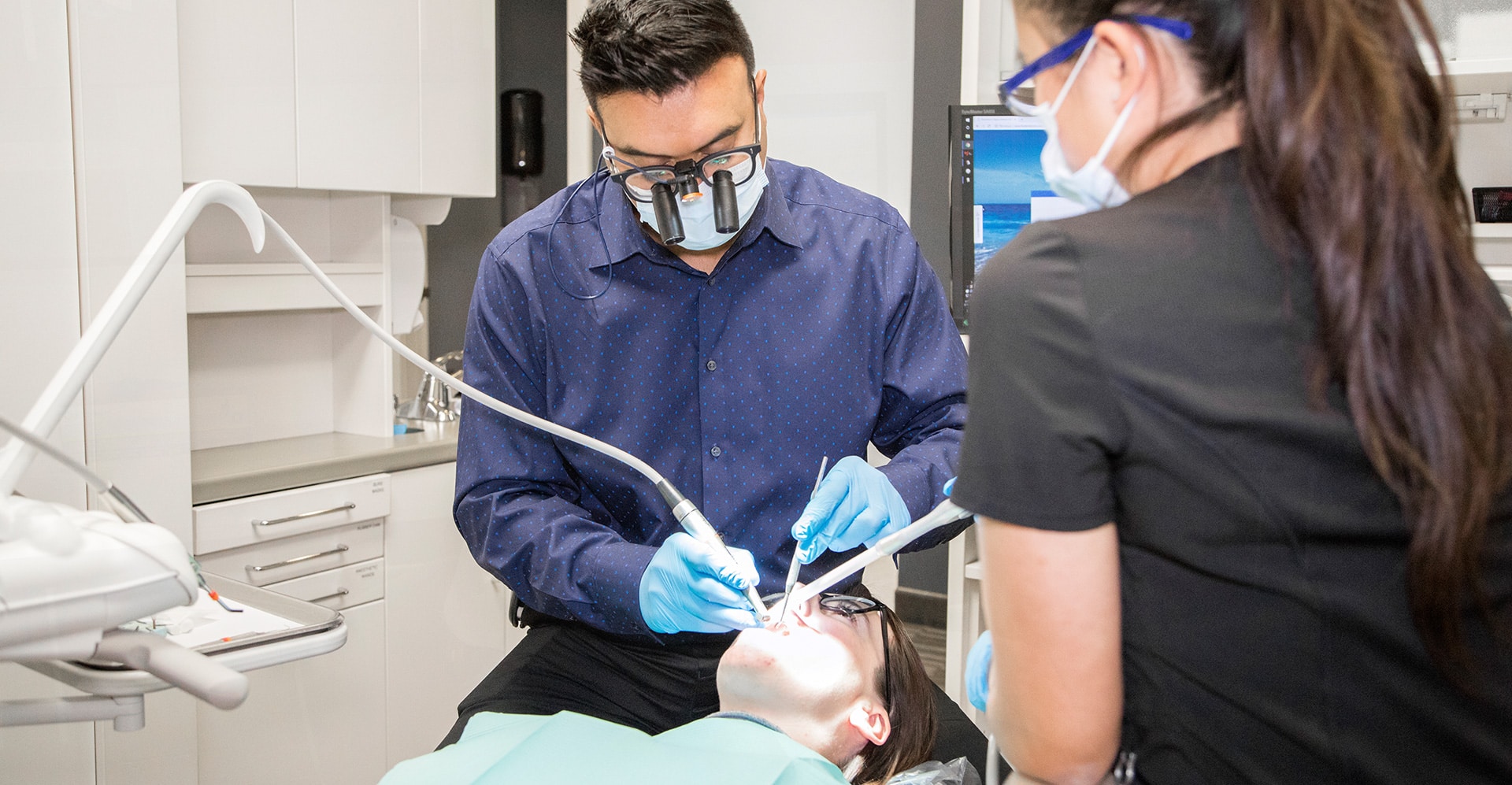SEALING OUT TOOTH DECAY
Preschoolers are increasingly prone to tooth decay. As well as being unpleasant and painful, tooth decay can also result in more serious problems such as premature tooth loss and periodontal disease in children.
It is important to prevent childhood caries (cavities) and tooth decay with the use of dental sealants. Sealants can bolster the mouth’s natural defenses, especially when combined with biannual checkups and an excellent daily homecare routine.

What are the benefits of sealants for children's teeth?
It is generally believed that dental sealants protect molars from oral bacteria and acids that damage their enamel. In the back of the mouth, you will find these larger, flatter teeth that are difficult to clean. The molars are the site of four out of five dental decay cases. Often, decay-causing bacteria live in the nooks and crannies of molar chewing surfaces (pits and fissures). It is extremely difficult to reach these areas with a regular toothbrush.
A pediatric dentist may coat additional teeth (for example, bicuspid teeth) if a child is at high risk for tooth decay. It serves as a barrier, preventing food particles and oral bacteria from accessing the vulnerable enamel of the teeth.
It is important to understand that dental sealants do not directly improve the health of the teeth, and they should not be used in place of fluoride supplements (if the dentist has recommended them) or general oral care. A sealant is generally less expensive, less uncomfortable, and more aesthetically pleasing than a dental filling.
What is the application process for sealants?
Dental sealants come in a variety of types, but most are made of liquid plastic. Before painting sealant on targeted teeth, the pediatric dentist must thoroughly clean and prepare the molars. Sealants can be bright pink when wet and clear when dry. The dentist is able to see that all pits and fissures have been thoroughly coated because of the bright pink coloring.
After every tooth has been coated, the sealant is either left to self-harden or exposed to blue spectrum natural light for several seconds (depending on the particular brand’s chemical composition). Using this specialized light, the sealant is hardened and the plastic is cured. This creates a thin layer of durable, hard, clear sealant.
The “sealing” procedure can easily be performed in one office visit and is completely painless.
What is the best time to apply sealants?
When primary molars first emerge, sealants are applied. It may be necessary to replace the sealant several times over the life of the primary tooth, depending on the oral habits of the child. The durability of sealants is largely determined by the oral habits of the child.
Permanent molars should be sealed as soon as they emerge, according to pediatric dentists. The sealant can sometimes be applied prior to the full development of the permanent molar.
It is important to monitor the sealant’s health on a biannual basis. Tooth decay can be caused by food particles trapped against the enamel if the seal begins to lift off.
Contact your pediatric dentist if you have questions or concerns about dental sealants.
Schedule a Consultation
Our dentists pride themselves on putting your needs first and offering FREE PARKING — a rarity for downtown dentists. We care and we listen. Our dentists have years of experience and are here to serve your needs at every appointment. If you have a question about your smile or need a second opinion, we’re here to help.

